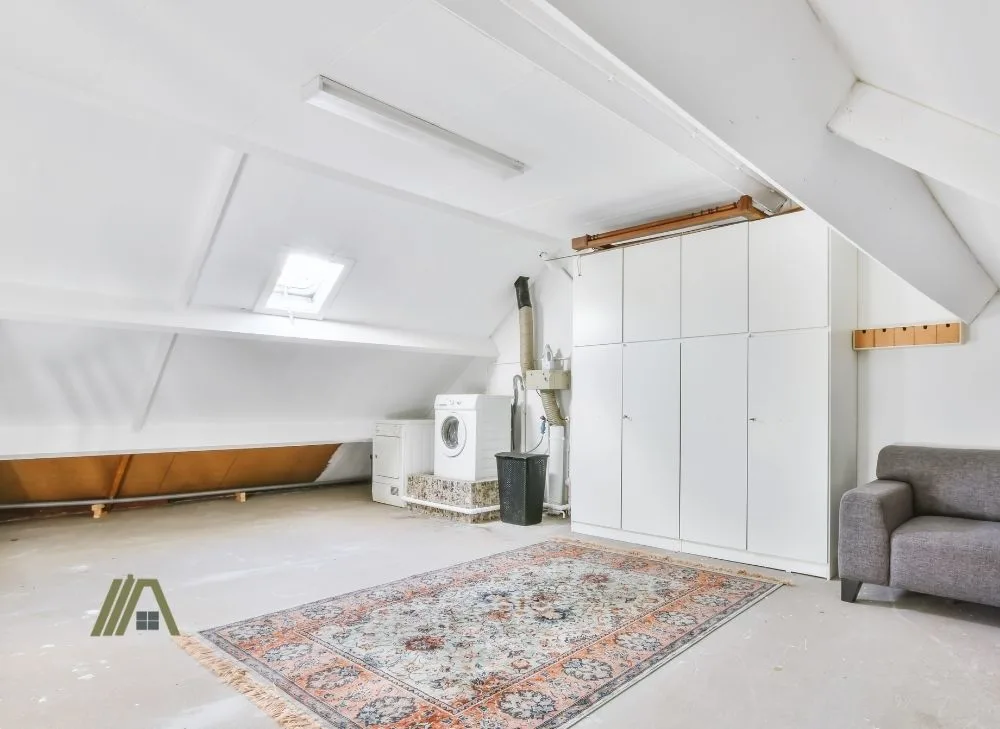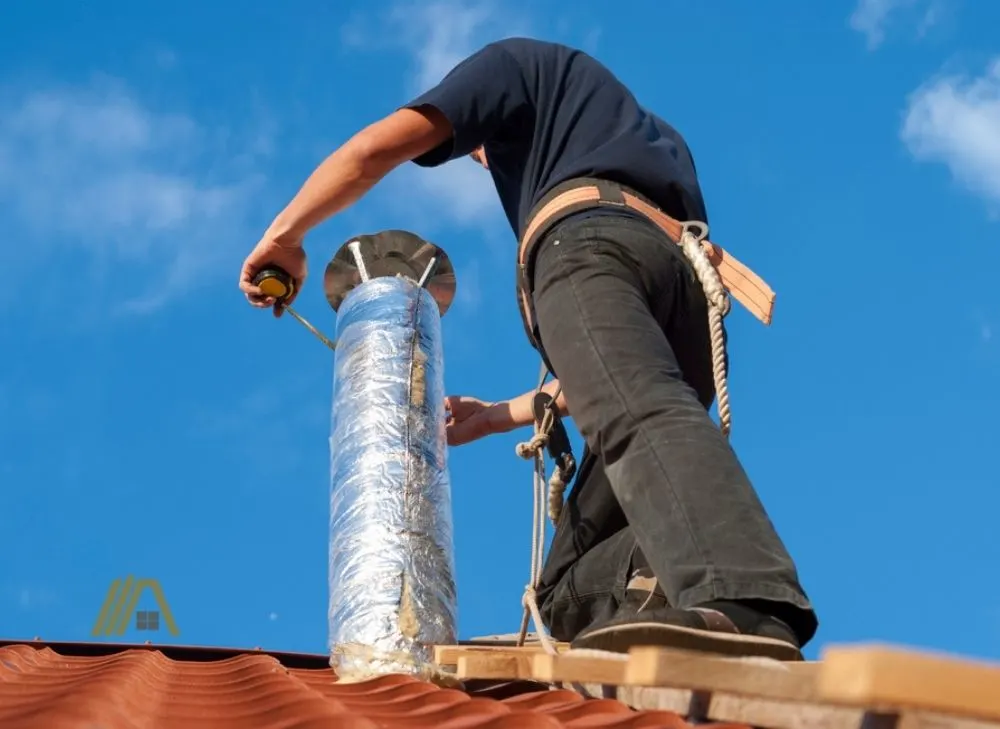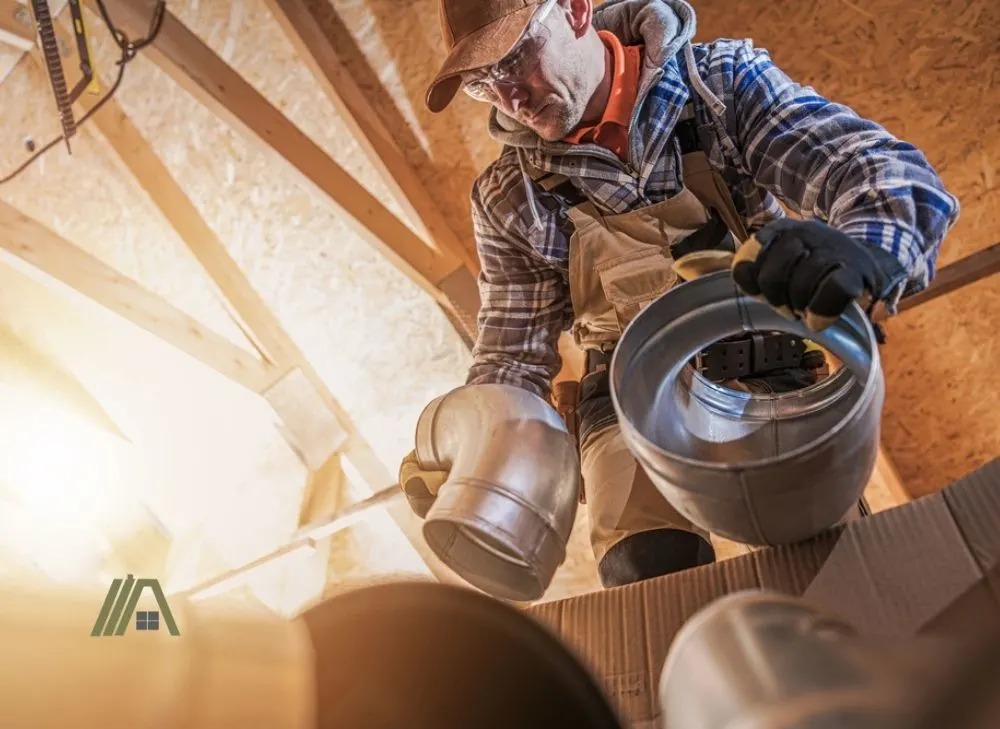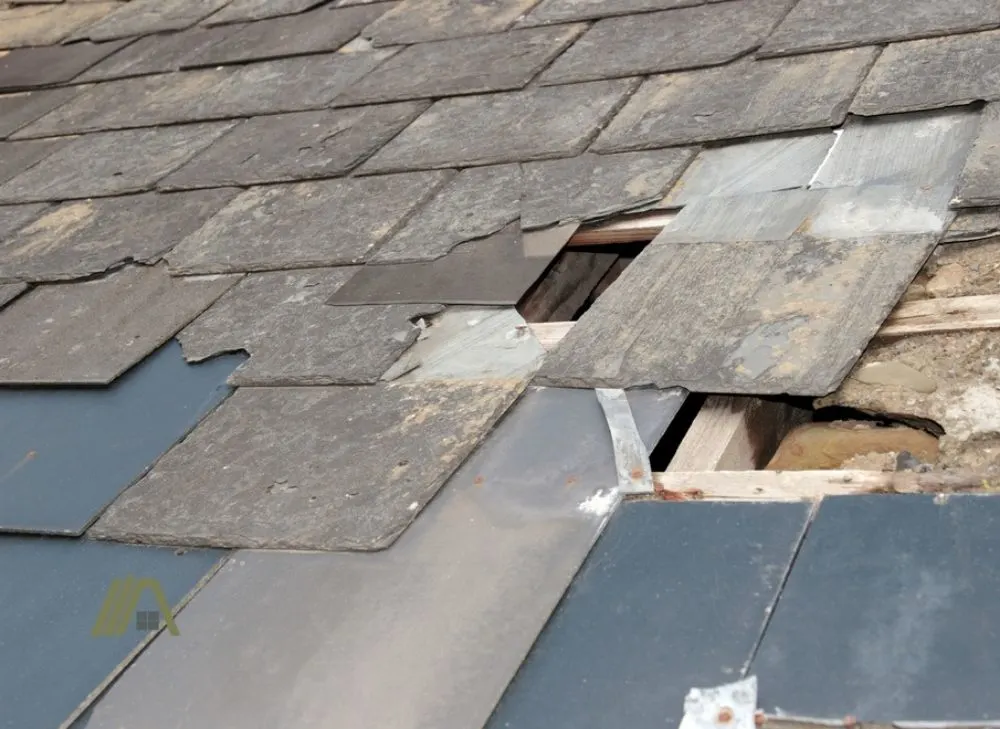Installing a dryer into your home can be a little more complicated than simply finding an empty spot to place it. Unless you purchase a ventless dryer, the appliance will need to be appropriately ventilated to the outside of the house in order for it to comply with housing codes.
It is common to vent a bathroom fan through the attic and out the roof. Dryer ducting and ventilation have different requirements. However, this ventilation route is still effective for dryers—provided it is done according to code.

Dryers can vent through (not into) attics. It can be the shortest and straightest route. There are unlikely to be openings and property lines to consider during vent placement. This route uses the natural upward flow of hot air. Installation is simple. Beware of backdrafts, roof leaks, and blocked vents.
Dryers Can Vent Through the Attic
According to the International Residential Code (IRC), which is compiled of the standard regulations and rules adopted by most states in America, there is no explicit statement that forbids you from venting your dryer through the attic. However, the IRC also does not clearly say that it is allowed.

Despite this, we can assume that it is acceptable to do so because venting the dryer through the attic does not contradict any of the generalized rules that surround dryer ventilation in America. The allowance is implicit as opposed to explicit.
Even though the IRC is adopted by most states, there is a chance that your particular state has its own rules and regulations that pertain to matters such as these. It is, therefore, important that you are aware of exactly what standards apply to your location, as failure to comply with them can result in hefty fines.
What the IRC Says About the Position of Dryer Vents
When you take a closer look at the IRC, you will find a bit of guidance on where you should position the dryer vent and lay the ductwork so that it is in compliance with the necessary standards.
According to Section M1502.2, the exhaust system of your dryer needs to be separate from all other venting systems. This does not mean that your bathroom fan and dryer cannot both run through the attic and out the roof. It means that they cannot do so while sharing the same ductwork.
Additionally, Section M1502.3 explicitly states that any exhaust ducts have to be expelled on the outside of the building.
The regulations also state that one has to follow the manufacturer’s specifications when it comes to the installation of the ventilation. This is a safe bet on the part of the building code regulators as dryer manufacturers will specify venting to the outdoors in order to make their product safe to sell.
Manufacturers also have the final say over where outside the duct must terminate. But if there are no specified instructions, then you would have to terminate the duct at least 3 feet from any windows, doors, or other openings of the building as per the IRC.
Benefits of Venting a Dryer Through the Attic
Not only is venting a dryer through the attic allowed but it can also be a really good idea.
Can Be the Straightest and Shortest Route
When it comes to venting your dryer through the attic, it can make your life a lot easier. Whether it does or not depends on the location of your dryer.
Through the attic and out the roof has the potential to be the most direct route, allowing you to install the ductwork with greater ease and fewer elbows. The straighter the ductwork, the better.

Furthermore, it has the potential to be a much shorter route to the outside of the house, especially if your dryer is on the floor directly under the attic. The shorter the ductwork, the better.
According to Section M1502.4.6, the total length from where the dryer connects to the transitional duct, all the way to the dryer exhaust vent on the outside of the house cannot exceed 35 feet.
A maximum length is important as you need to have the most direct and shortest route possible for the air to travel. If the ducts were too long, there would be friction-related energy loss, which would mean that the air slows down too much before reaching the terminal vent.
The repercussions of this would be ineffective moisture and heat removal as well as an increased risk of lint deposition. Lint clogs the vents, making your dryer work harder to exhaust air. Furthermore, as lint is flammable, you want it safely out of your house as soon as possible.
Every elbow that is added to the vent to accommodate beams and other obstacles, means you need to reduce the maximum length size as per the table in the IRC. The reasons for this are the same as above; bends cause energy loss and poor airflow velocity means water and lint deposition.
Hot Air Naturally Flows Upward
As we all know, one of the rules of nature is that hot air rises and cold air sinks. If you have your vents going straight up through your ceiling, into your attic, and out to the environment, then you are increasing the efficiency of the venting.
The more horizontal or downward angles that you have in the ventilation system, the harder the dryer will have to work to exhaust the air and the less efficient your ventilation will be.
Less Likely to Be Near Openings and Property Lines
Venting your dryer through the attic means there will be fewer instances of obstructions or openings nearby.
When you vent out of the wall or soffit, you have to take into consideration things like nearby windows, doors, property lines, passive soffit vents, etc. Dryers cannot exhaust near these things or else the undesirable air could easily return into the house or affect your neighbor.
On the roof, however, you don’t have to worry about openings and property lines.
Relatively Easy to Install the Termination Vent
Venting through the attic can also make the installation of the termination vent easier.
Instead of having to cut through a wall and avoid all sorts of wires and pipes to vent out the side of the house, you just run the duct through the attic and out of the roof, which only involves removing a few tiles and a bit of insulation.

This can save you time, effort, and money.
Considerations Before Venting Through the Attic
It must be mentioned that this route is not without disadvantages; these need to be weighed up carefully.
Backdrafts Are More Likely
When you vent your dryer through the attic, there is a higher chance of experiencing backdrafts. This basically means that the air that is trying to be expelled from your home, gets pushed back in, which really defeats the purpose of the entire system. This happens because the roof is exposed to wind.
Backdrafts mean that your dryer will be working extra hard to complete a load since the venting has become inefficient. If you have a gas dryer, there is also the risk of carbon monoxide traveling back into your home, which can have serious consequences.
Luckily, as long as you follow the IRC (which you should do when making any alterations or renovations inside your home), then you should be equipped with a backdraft damper, which is a requirement according to Section M1502.
Holes in the Roof Means More Chance of Leaks
Making a hole in your roof to accommodate the exhaust vent, means there will be more chance of experiencing leaks in your attic, which can often go unnoticed if you do not enter your attic more than once a year when you put away your holiday decorations.

Therefore, it is extremely important that you do everything necessary while you are installing the vent to prevent leaks in the future. For instance, installing a pipe flashing around the vent creates a weather-tight seal that ensures no water can leak through.
Of course, with the changing temperature, your roof tends to move, and therefore, so will your vent. So ensure your flashing is sufficiently installed and secured with a clamp to limit it from creating gaps that can allow rain and other precipitation to fall through.
More Easily Blocked by Snow and Leaf Build-Up
When there is a hole in your roof, it basically screams “clog me”. Whether it is snow, leaves, or the neighbor’s kid’s oddly accurate tennis balls, having the vent directly at the top of your home means it can become easily blocked.
This means you will have to make regular visits to your roof and drag your ladder back and forth to unclog it so that your dryer can be vented properly. A clogged vent means you are at risk of not only lint build-up, which can cause fires, but also a moisture problem as the air cannot be expelled as necessary.
Moreover, as I have mentioned before, blocked dryer ducts make the dryer work harder. This shortens its lifespan and creates excess heat.
Venting Into the Attic is Prohibited
As long as you only vent through the attic, directly to the outdoors you are in the clear. However, venting your dryer into the attic is strictly prohibited according to the IRC. There are a number of consequences for venting your dryer into your attic.
- The moist air that is venting into your attic can cause water-related structural damage.
- Your beams and walls can become infested with mold, and your precious memories stored in cardboard boxes can be quickly ruined.
- If you vent a gas dryer into the attic, you are putting your family at risk of carbon monoxide poisoning.

- The possibility of a fire caused by dryer lint is increased as the lint accumulates in the hot attic.
- The moist air can also affect your electrical wiring and can cause circuits to break or trip, which can affect the functioning of the electronics in your home.
- The hot, humid air that will make up your attic makes it an inviting breeding ground for pests that make quickly infest the rest of your home.
- The hot air in your attic can make your HVAC work a lot harder. This can run up your electricity bill really quickly.
Sources
https://www.familyhandyman.com/article/what-is-backdraft-in-your-home-and-how-to-stop-it/
